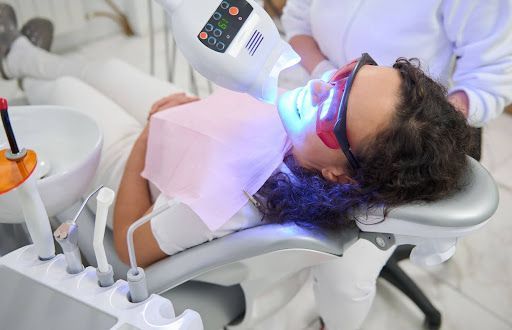Maximizing Oral Health with Aligners
In this comprehensive resource, readers will discover invaluable insights into optimizing oral health through the use of aligners. Through clear and accessible language, the complexities of orthodontic care are demystified, empowering readers to make informed decisions about their oral health journey. From understanding the benefits of aligners to navigating common challenges, this resource serves as an indispensable companion for those embarking on the path to a healthier smile.
Understanding Clear Aligners: An Overview
Clear aligners, including popular brands like Invisalign, have revolutionized the field of orthodontics by offering an aesthetic and less noticeable alternative to traditional braces. Made from smooth, comfortable, and virtually invisible plastic, these aligners fit snugly over your teeth and gradually move them into their proper position. Unlike metal braces that use wires and brackets, clear aligners are removable, allowing for easier eating and oral hygiene. This innovative approach to straightening teeth has made them a preferred choice for both adults and teens who wish to improve their smile without the metallic look of braces.
The functioning of clear aligners is rooted in customization. At the start of the treatment, orthodontists like those at McAllister Orthodontics in Omaha, Fremont, and Elkhorn, take a detailed 3D scan of the patient’s mouth. Using this model, a series of clear aligners are crafted specifically for the patient's teeth, each designed to make slight adjustments to the tooth position. The patient progresses through the series of aligners, switching to a new set every one to two weeks. This process gently and steadily shifts the teeth into a perfect alignment, under the close supervision of an orthodontist. Patients typically visit their orthodontist every six to eight weeks to ensure their treatment is progressing as planned.
Maintaining Impeccable Oral Hygiene
The very nature of aligners, being removable and fitting closely over the teeth, requires a diligent care routine to prevent the buildup of plaque and bacteria. Neglecting oral hygiene while using aligners can lead to various dental complications such as cavities, gum disease, and unpleasant odors - a direct contradiction to the purpose of seeking a healthier, more attractive smile. Therefore, establishing and adhering to a comprehensive cleaning regime for both the aligners and your teeth is crucial. This not only ensures the longevity and effectiveness of the aligners but also safeguards your overall oral health.
As clear aligners grow in popularity for orthodontic treatment, understanding their benefits and responsibilities is key. For those considering this modern approach to straightening their teeth, it’s imperative to recognize the importance of maintaining good oral hygiene. Staying committed to a thorough cleaning routine will help prevent any potential oral health issues and ensure the treatment leads to a cleaner, healthier smile.
Daily Cleaning Routine for Clear Aligners
Maintaining the cleanliness of your clear aligners is as crucial as brushing your teeth. A diligent daily cleaning routine prevents the build-up of harmful bacteria, ensuring your aligners remain invisible and odor-free throughout your treatment. The first step after removing your aligners, which should be done for eating or drinking anything other than water, is to rinse them under lukewarm water. This simple action washes away saliva and plaque, preventing them from drying out and becoming a breeding ground for bacteria.
Following the rinse, using a soft-bristled toothbrush and a small amount of non-abrasive toothpaste, gently brush the entire surface of the aligner. It’s important to avoid abrasive toothpastes as they can scratch the aligners, making them less invisible and more susceptible to stains. Similarly, vigorously brushing or using a hard-bristled brush can cause damage, resulting in a poor fit. After brushing, rinse the aligners thoroughly under lukewarm water before placing them back in your mouth or into a cleaning solution for a deeper clean.
To ensure deep cleaning, soaking your aligners in a denture cleaner or aligner-specific cleaning solution once a day is recommended. This extra step helps to remove any lingering bacteria and prevents the formation of odor. After soaking, give your aligners another quick rinse under lukewarm water before reinserting them. Following these steps daily will ensure your aligners remain clear, clean, and comfortable to wear.
Safe Products for Aligner Care
The choice of products used in the care of your aligners can significantly affect their longevity and appearance. When selecting toothpaste and soap for cleaning, opt for those that are non-abrasive and free from harsh chemicals. Colored or scented soaps should be avoided as these can transfer to the aligners, leading to discoloration and unpleasant smells. Instead, choose clear, unscented soaps or aligner-specific cleaning solutions. Always adhere to the manufacturer's instructions when using these solutions to ensure optimal results.
Best Practices to Prevent Odor, Discoloration, and Deterioration
Preventative care is key in maintaining your clear aligners. To avoid odors, ensure you're following the cleaning routine daily and maintaining good overall oral hygiene. Brush and floss your teeth before reinserting the aligners to remove any food particles that could contribute to bacteria growth. To prevent discoloration, avoid eating or drinking highly pigmented foods and beverages while wearing your aligners. Finally, to avoid deterioration, always store your aligners in their case when not in use and keep them away from high temperatures, which can warp the plastic and affect their fit. By adhering to these practices, you can ensure your clear aligners stay in pristine condition, supporting a cleaner, healthier smile throughout your orthodontic treatment.
Unlock the secrets to a radiant smile and optimal oral health through the power of aligners.
Reach out to McAllister Orthodontics today and let us guide you on your journey to a healthier, happier smile.












